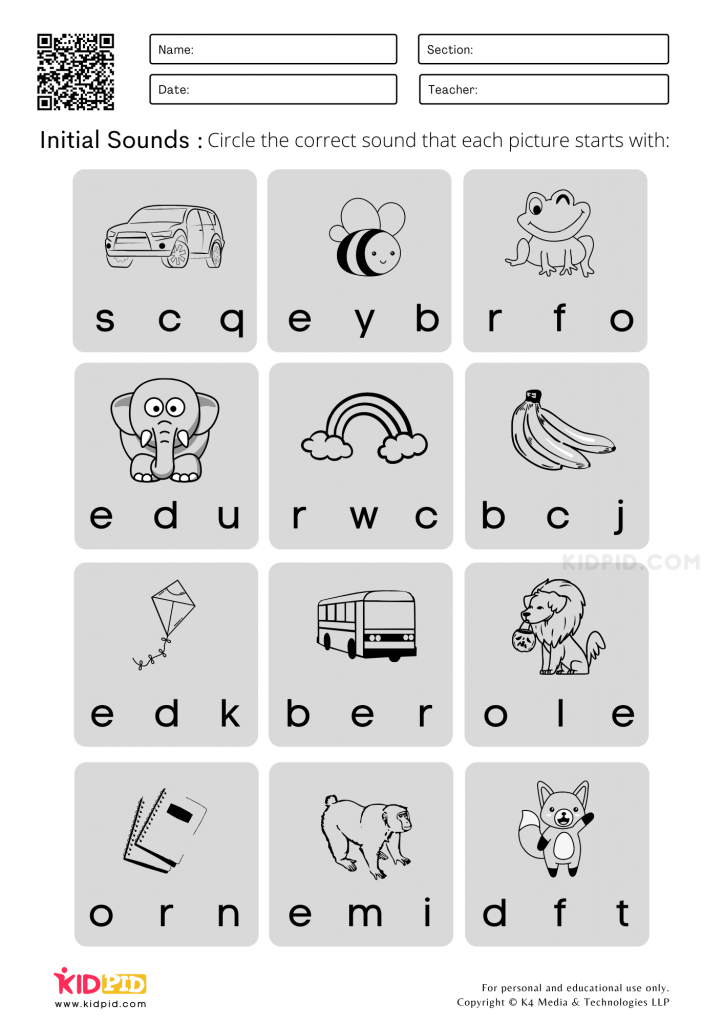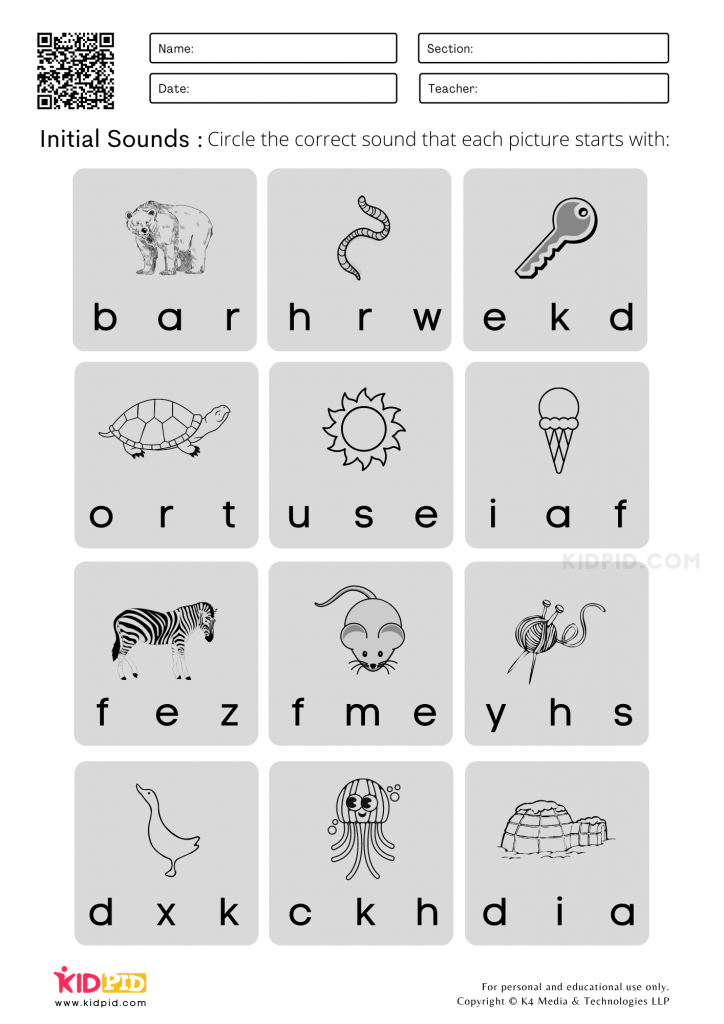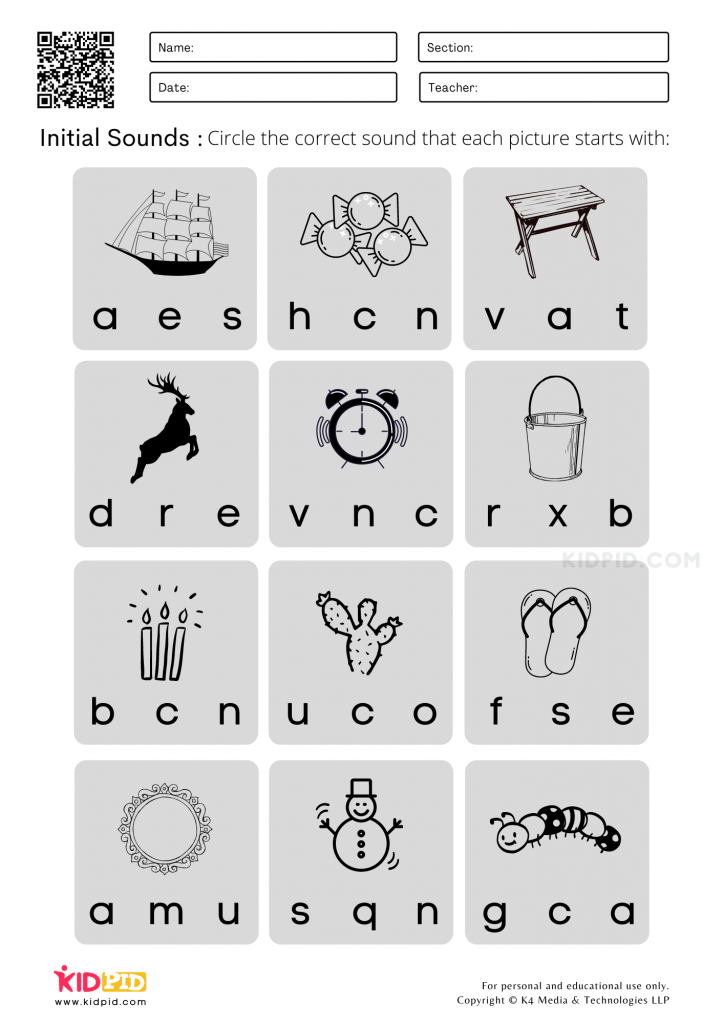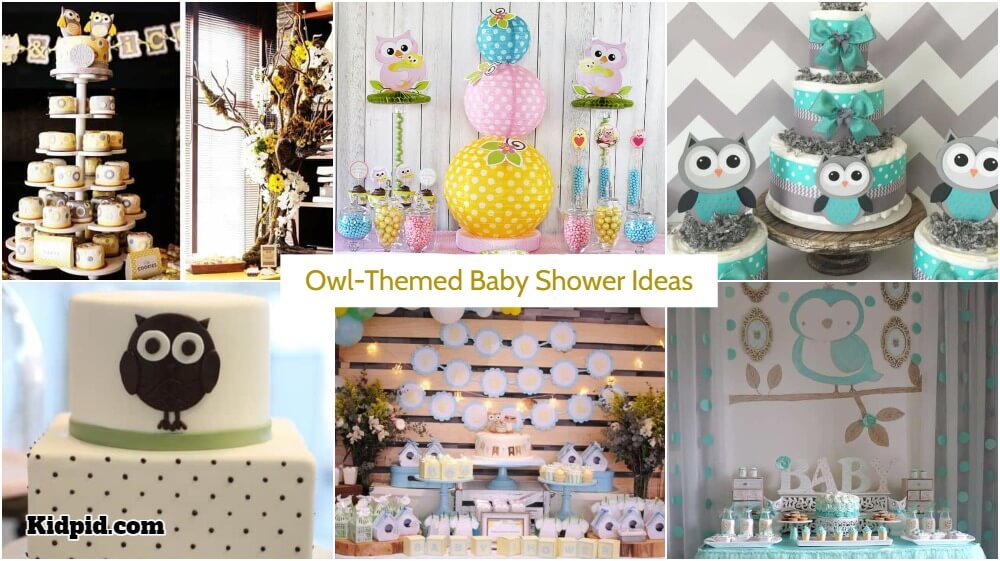Initial Sounds Worksheets for Kindergarten

A key step in a child’s learning journey is not only to understand concepts but to be able to express them. In kindergarten children become more aware of their surroundings and everything around them. At this age, children are very perceptive and learning comes naturally to them. Learning to sound out words by applying existing knowledge of letter-sound relationships is known as decoding words and is a crucial step in the process of learning to read.
The first step to reading any word is to understand the initial sound of the word and then proceed to understand the sound and pronunciation of the entire word. Children develop the ability to decode words through regular reading but the guided practice is also a great way to enrich the learning process.
The following set of worksheets depict a variety of common items and words that children at this age are already familiar with. Under each picture, three letters are given – the task is to correctly identify the letter with which the word starts.
Children may have trouble with certain words which is quite normal. A great way to teach sounding out words is to say the word to them very slowly and hold the word after each sound. You can then ask your child to identify the letter associated with that sound – this will help them better correlate sounds to letters and words.
The first worksheet depicts many common pictures such as dog, cat, pencil, carrot, etc. The task is to identify the starting letter of the word depicted in each picture and circle the correct letter.
Initial Sounds Worksheets for Kindergarten

As the child sounds out the word ask them to not only identify the first letter and write it down but also do the same for the rest of the word. This will help them break down the word according to the constituent sounds and letters and give them a better overall understanding.

This is the third worksheet and it depicts several animals such as owl, pig, whale, etc. which piques the interest of young children and helps them enjoy their tasks.

Several words in the English language are spelt differently from how they’re pronounced and often the same letter produces different sounds in different words. For example, ‘ear’, ‘earth’ and ‘elephant’ all start with the letter ‘e’ but the initial sound of each of these words are unique and different from one another. It is important to make sure that children keep these differences in mind while learning.

This worksheet contains words such as ‘windmill’ and ‘envelope’ which are quite a mouthful for young children to pronounce. This makes it difficult to decode the word and so it is important to assist them with words like this.

Words like ‘moon’ and ‘baby’ are very easy to pronounce and decode and are a great starting point for learning to sound out words.

This is the seventh worksheet and it depicts several common household items such as a table, clock, bucket, mirror, etc. which allows children to relate what they’re learning to their surroundings.

This is the eighth and final worksheet. Make sure your child is loudly sounding out each word before trying to identify the letter – this will allow them to correlate spoken sounds with words and letters.

The process of learning to sound out and pronounce words takes time and patience – for both the student and the teacher. The best way to learn anything is to focus and enjoy the process and what better way to do that than with fun worksheets filled with pictures!
So, wait no more! Print your worksheets and start your child’s learning journey today!







Nice worksheets.